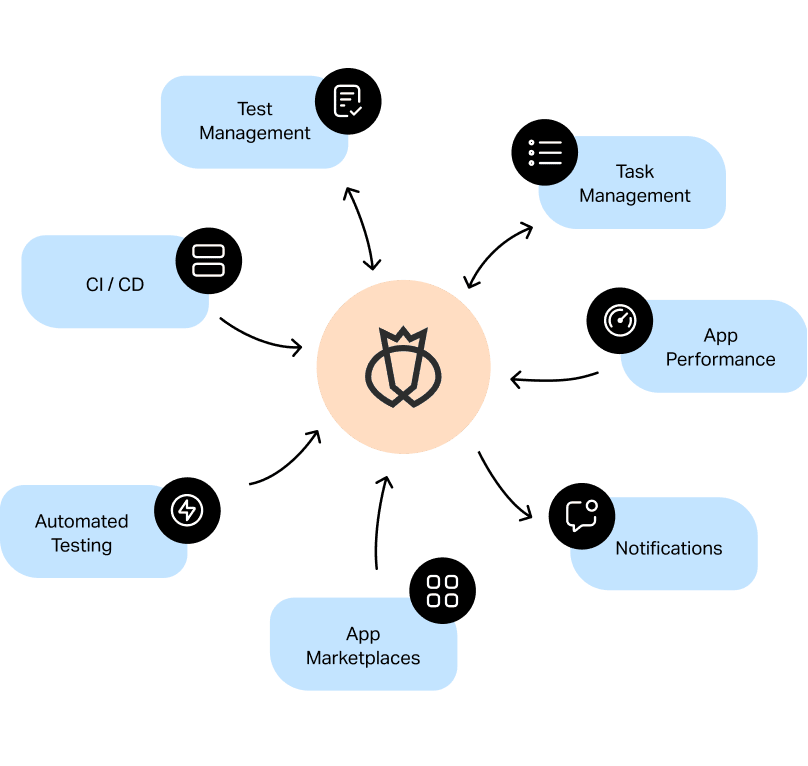Understanding Automation Testing: Tools, Strategies, and Benefits
Understanding Automation Testing: Tools, Strategies, and Benefits
Blog Article
From Guidebook to Automated Testing: A Comprehensive Overview to Transitioning Efficiently and Properly
In the world of software screening, the change from handbook to automated procedures has actually ended up being an increasingly essential change for organizations seeking to enhance effectiveness and accuracy in their screening techniques. The trip from guidebook to automated testing is not without its obstacles, yet when approached purposefully and with a clear strategy in mind, the advantages can be significant.
Benefits of Automated Checking
Automated testing supplies many benefits, boosting efficiency and precision in software growth processes. Automated tests can be run at the same time on multiple devices and operating systems, significantly speeding up the testing stage contrasted to manual testing.
Moreover, automated screening makes certain a higher level of precision in detecting defects. Uniformity in screening is also boosted, as automated tests carry out the same actions specifically each time they are run.
Picking the Right Tools

To start with, assess your objectives and requirements. Understand the extent of your job, the technologies included, and the capability of your team. This evaluation will certainly help you determine the capabilities and features you need in your testing tools.
Secondly, take into consideration the compatibility of the tools with your existing processes and systems. Smooth assimilation with your current software application growth lifecycle is important to guarantee a smooth change to automation.
Furthermore, evaluate the scalability and adaptability of the tools. As your screening needs advance, the tools need to be able to adjust and accommodate adjustments properly.
Last but not least, aspect in the assistance and community around the devices. When implementing automated testing, durable support and an energetic customer area can provide valuable sources and assistance. By carefully considering these elements, you can select the right tools that straighten with your demands and established the stage for a successful shift to automated testing.
Writing Efficient Examination Scripts

When crafting test scripts, it is vital to consider the details requirements of the software application being tested and make certain that the manuscripts address all essential performances. Detailed and clear calling conventions for test scripts and examination cases can improve readability and maintainability. In addition, incorporating mistake handling devices within the test scripts can aid in identifying and resolving problems without delay.
Furthermore, organizing examination manuscripts into modular components can enhance reusability and scalability, lowering redundancy and enhancing effectiveness in test script maintenance. Normal testimonials and updates to test scripts are critical to equal developing software application needs and capabilities. By following these principles, testers can create efficient and robust test manuscripts that add dramatically to the success of automated screening procedures.
Integrating Automation Into Workflows
Efficient integration of automation tools into existing workflows boosts and improves processes productivity within software development cycles. When incorporating automation into workflows, it is essential to identify repeated tasks that can be automated to save time and reduce human mistake. By effortlessly integrating automated screening tools like Selenium or Appium right into the software program development lifecycle, teams can achieve faster comments on code modifications, leading to quicker bug discovery and resolution. This combination permits continual screening throughout the growth process, guaranteeing that any issues are identified early on, causing greater software application top quality. In addition, automation can be made use of to activate tests instantly after each code dedicate, offering immediate recognition and maximizing testers to concentrate on even more complex circumstances. Appropriate integration of automation devices requires cooperation in between development, screening, and operations groups to establish a unified operations site that enhances performance and efficiency in delivering top notch software program items.
Making Sure a Smooth Change
Effectively transitioning to automated screening entails meticulous planning and careful execution to maximize and reduce interruptions effectiveness in the software application growth process find out here now - automation testing. To guarantee a smooth shift, it is important to begin by conducting an extensive evaluation of the present screening procedures and determining locations where automation can bring the most considerable advantages. Engaging with all stakeholders early while doing so, consisting of programmers, testers, and task supervisors, is vital for gathering assistance and buy-in for the automation effort
Communication is essential during this transition stage. Clear interaction of the objectives, advantages, and assumptions of automated screening assists to handle any type of resistance or issues that may occur. Additionally, providing adequate training and sources for staff member to upskill in automation tools and techniques is vital for guaranteeing a successful transition.

Verdict
Finally, transitioning from guidebook to automated screening provides many advantages, consisting of raised performance and integrity. By picking the ideal devices, creating reliable examination scripts, and integrating automation perfectly into workflows, organizations can ensure a smooth and successful shift. It is vital to accept automation as an important asset in software screening procedures to enhance overall quality and performance.
In the world of software application testing, the shift from guidebook to automated processes has actually ended up being a significantly important shift for organizations looking for to boost efficiency and accuracy in their testing practices. Automated examinations can be run all at once on numerous gadgets and operating systems, significantly speeding up the screening stage compared to hand-operated screening. Consistency in screening is anonymous likewise boosted, as automated tests execute the very same steps specifically each time they are run.To make sure the effective implementation of chosen screening devices, the creation of efficient test scripts plays a vital role in validating the capability and efficiency of automated processes - automation testing. By adhering to these principles, testers can develop efficient and robust test scripts that contribute significantly to the success of automated testing procedures
Report this page